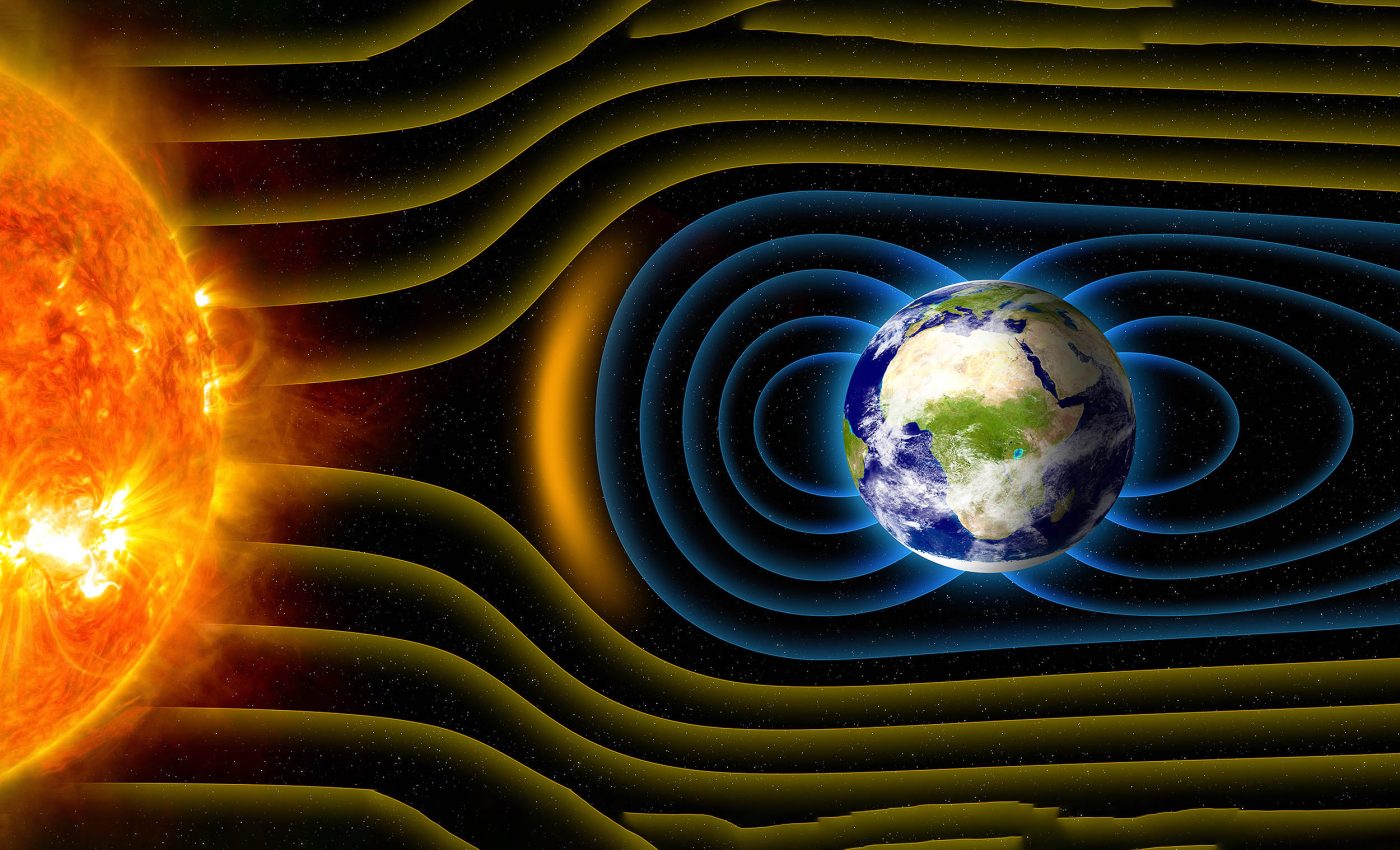
Earth's magnetic field dances a never-ending waltz with the solar wind
Solar wind, a constant stream of charged particles from the sun, bombards our Earth much like a supersonic jet facing a high-speed windstorm, relentlessly driving against our planet’s protective shield.
These powerful solar wind streams curve around the Earth’s magnetosphere, creating a bow shock that deflects and channels these energetic particles.
Much like how wind flows around a jet or water moves around a boat, the solar wind sculpts our magnetosphere into its characteristic wind sock form, constantly shaping and reshaping its boundaries.
Understanding the solar wind
Zooming along at about a million miles per hour, the solar wind spreads throughout the solar system and consists of electrons, protons, and a mix of other particles.
These particles get so hot in the Sun’s corona that they can break free from its gravitational pull and drift into space.
When solar wind hits Earth, it creates stunning auroras near the poles — those beautiful natural light shows happen when solar particles interact with our planet’s magnetic field.
But solar wind can also bring some real challenges for our technology. It can mess with satellites, cause radio blackouts, and even disrupt power grids. That’s why scientists keep a close eye on it, using spacecraft like the Parker Solar Probe to study its behavior.
Getting a better grasp on solar wind is key to predicting space weather events. This info not only helps protect our tech but also keeps astronauts safe when they venture beyond Earth’s magnetic shield.
As we learn more, we get better at forecasting solar storms and reducing their impact. So while solar wind might sound like something out of a sci-fi movie, it’s actually a real and powerful force shaping our cosmic environment.
Solar wind dynamics
Alterations in the solar wind demand our attention, as they can significantly impact the structure and dynamics of the magnetosphere, influencing everything from space weather to satellite operations.
These changes provide a valuable glimpse into the behavior of other celestial bodies, such as Jupiter’s moons and distant extrasolar planets, revealing the universal nature of these interactions.
One such event, a powerful coronal mass ejection (CME), serves as an intriguing case study of such changes, highlighting the profound effects these solar phenomena can have on our space environment.
Tracing the anomaly of a CME
Coronal mass ejections usually travel faster than the Alfvén speed, which represents the speed at which vibrating magnetic field lines travel through magnetized plasma.
This speed can be affected by the surrounding plasma environment. However, an exceptional CME in 2023 changed the game. It disrupted the ordinary configuration of Earth’s magnetosphere for a brief period of roughly two hours.
Thanks to the observations derived from NASA’s MMS spacecraft, we now have a significantly clearer understanding of the event.
“In an instance on 24 April 2023, the MMS spacecraft reported that even though the streaming speed of the solar wind was high, the Alfvén speed during the strong CME was remarkably faster,” the research team noted.
This situation was unusual, as the solar wind typically travels faster than the Alfvén speed.
Temporary disappearance
The speed anomaly triggered a peculiar event — Earth’s bow shock temporarily vanished.
This absence allowed the plasma and the magnetic field from the sun to interact directly with our magnetosphere. Meanwhile, Earth’s wind sock tail underwent a transformation.
It was replaced by structures termed as Alfvén wings, which emerged as links connecting Earth’s magnetosphere to the active region of the sun.
Acting as a highway, this connection facilitated the transfer of plasma between the magnetosphere and the sun.
New insights and future research
This singular CME event has been a valuable opportunity for unveiling how Alfvén wings form and evolve.
Additionally, it has offered profound implications for the study of other magnetically active bodies in our cosmos.
“Our observations suggest the formation of aurorae on Jupiter’s moon Ganymede may also be due to Alfvén wings,” the authors write, noting that future research could explore similar Alfvén wing aurorae occurring on Earth.
As a result, this extraordinary CME has opened up a novel latticework of possibilities in our exploration and understanding of the universe.
Solar winds in space weather forecasting
The recent observations related to the exceptional coronal mass ejection (CME) not only advance our understanding of Earth’s magnetosphere but also carry significant implications for space weather forecasting.
As our reliance on technology grows, especially in sectors like navigation, communication, and electrical grid management, predicting the effects of solar phenomena becomes crucial.
The formation of Alfvén wings, as illustrated by this CME event, highlights a new facet of magnetic interactions that can influence space weather patterns.
Earth’s constant dance with the Sun
By comprehensively understanding how these wings behave during significant solar interactions, scientists can enhance predictive models that assess the potential impacts of solar storms on Earth’s atmosphere and technological infrastructure.
This knowledge could play a vital role in mitigating the adverse effects of solar events, such as satellite malfunctions or power grid failures.
Therefore, the intricate dance between solar wind and Earth’s magnetosphere is not merely an academic curiosity; it is a frontier for practical applications that safeguard our increasingly interconnected and technologically dependent world.
The study is published in the journal Geophysical Research Letters.
—–
Like what you read? Subscribe to our newsletter for engaging articles, exclusive content, and the latest updates.
Check us out on EarthSnap, a free app brought to you by Eric Ralls and Earth.com.
—–













